Reviews
Nicolas Roeg
UK, 1976
Credits
Review by Bernardo Rondeau
Posted on 16 December 2010
Source The Criterion Collection DVD
External links
Related music from Doom & Gloom for the Tomb
Categories Rock Follies
In the gloriously turbulent history of rock star lead performances, few can probably match the absolute symbiosis of David Bowie and The Man Who Fell to Earth. Did the Thin White Duke beget the film or vice versa? It seems both.
Produced and released as Bowie was peaking both creatively and chemically, moving away from his glittery roots to invent his own distinct brand of modernist art rock while, apocryphally, sustaining himself on cocaine and milk, The Man Who Fell to Earth is less sci-fi adventure than future shock tone poem. Already a stranger in a strange land—a blue-and-green-eyed specter maniacally crooning soul music in Nixon’s America—Bowie was cast as the billionaire humanoid Thomas Jerome Newton in Roeg’s film after the director saw him in the 1974 tour documentary Cracked Actor. The singer’s ethereal backseat catatonics, not to mention his emaciated androgyny, are all used to great effect in Roeg’s film. (As are the singer’s own limousine and its burly chauffeur).
Perhaps the apotheosis of the associative, loose-limbed abandon of 1970s cinema, The Man Who Fell to Earth is kaleidoscopic bordering on sensory. For its first, dialogue-free minutes, Bowie’s drift across a limpid Panavision frame is overlaid with constellations of lens flares and set to the rhythms of pulsing zooms. Roeg deploys the film’s narrative, adapted from the 1963 Walter Tevis paperback, sparingly. An alien from a drought-stricken planet (an unintentional global warming prophecy that’s changed from the book’s original, Cold War-ready back-story of nuclear holocaust) becomes the reclusive CEO of a gargantuan American corporation, trumped-up CIA threat, television addict and a stranded lush, in that order. Along the way, Newton’s hesitant, awkward asexuality somehow attracts hysterical Southern belle Mary-Lou (Candy Clark) while his ice-cold ambiguity is contrasted with the aestheticism of his second-in-command (Buck Henry) and the bedroom prowess and rugged individualism of macho engineer Rip Torn. Clark introduces him to booze and pleasures of the flesh, Henry monetizes his patents (scripted on onion-skin paper as translucent as Bowie’s pale complexion) and Torn offers a blustery foil
The film strings along in subtle leaps and eerie lapses including visions of the desolate planet and the family Newton has left behind, the opaque scheming of a rival conglomerate, the weightless frolics of two androgynous figures doused in milky liquids and, most bizarrely, a hallucination of an olden agrarian community set to cosmic hillbilly twangs. As much as the road movies of the period, The Man Who Fell to Earth offers indelible glimpses of a new America - the empty, malleable West contrasted with the bustling, metropolitan East - where technology abounds: hi-fi’s, cameras, phones, trains, helicopters, x-rays, spaceships and, most iconically, Bowie’s banks of monitors tuned to every channel likely available to 1975 couch potatoes. These engines of convenience often double as means of surveillance. But most often they’re beacons of malaise.
Newton builds a surprisingly modest manor on a New Mexico lakefront decorated with Shinto gates, while his ubiquitous company - in the bedroom (the instant developing film used by one of Torn’s conquests), on the road (a gas station), and in your home (a gauzy ad with a leading man who may or may not be Newton) - permeates every corner of American life. Beyond the bleached blue skies Newton’s planet picks up the waves and radiations of Earth; while on terra firma, vague forces control the currents. From Newton as a highly-reclusive mastermind to the continuously vague opponents complicating the film, power is abstracted.
Tapping into the muted melancholy and foregone indulgences of the 1970s, The Man Who Fell to Earth’s most haunting proposal, though, might be of an eternal extension of that somber decade. Years, decades pass as Torn and Clark age dramatically, almost grotesquely. Bowie stays the same - free of all things wrinkled, sagging or grey - and so does the world around him.
Coming during Bowie’s darkest period, drenched as it was for Lennon in Los Angeles’ abundant sunshine and baroquely babylonian excess, the film yielded a pair of album covers (1976’s Station to Station and 1977’s Low), much of the singer’s wardrobe in the ensuing years, and, overall, a new image. White light, paranoia, zero degree rawness.
Just as Jagger’s mumbling, stoned mysticism befit the tumbledown debauchery of Nicholas Roeg’s prior rock star vehicle - 1970’s Performance, co-directed with Donald Cammell who is credited with “original development” of The Man Who Fell to Earth - so does Bowie’s sickly, dizzied presence belong in the airless world of Roeg’s film. Throughout, Bowie is more alien in his human guise than when he plucks his contact lenses and reveals himself in his original lizard-eyed, denuded extra-terrestrial form.
Though he expressed interest in it, contractual conflicts prevented Bowie from scoring the film. Instead there’s the burned-out country-folk of John Phillips and moody ambiences from Stomu Yamashta. In one of the film’s most subtly perverse moments, Newton is dragged to a church service by Clark. As the congregation joins in a hymn, he appears incapable of holding a tune, grimacing his way through the couplets. Late in the film, Torn drops by a record store to sample Newton’s debut LP. Titled “The Visitor”, it’s comprised of messages to his distant planet. Though never played over the soundtrack, the very idea of this record inspired Jim O’Rourke’s 2009 album of the same name.
In the end, The Man Who Fell to Earth may offer the most perfect crystallization of what’s envisioned, or at least desired, for rock stars: narcissistic, forever young, endlessly decadent and infinitely elusive objects of impossible adulation. In its final shot, as Bowie tips his head down and hides his face under a black fedora, the film appears to freeze-frame. But the rustling leaves and distant passing cars reveal that the camera is still rolling, Bowie’s the only thing standing still, unchanged, mummified.
More Rock Follies
-

Head
1968 -

Sympathy for the Devil
1968 -

Alice’s Restaurant
1969 -
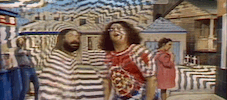
200 Motels
1971 -

Journey Through the Past
1972 -
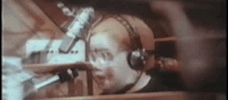
Human Highway
1982 -
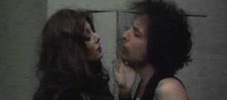
Renaldo and Clara
1978 -
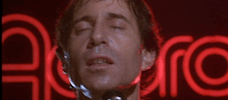
One Trick Pony
1980 -
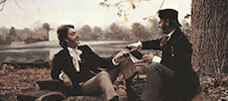
Give My Regards to Broad Street
1984 -

The Man Who Fell to Earth
1976 -
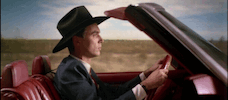
True Stories
1986
We don’t do comments anymore, but you may contact us here or find us on Twitter or Facebook.



